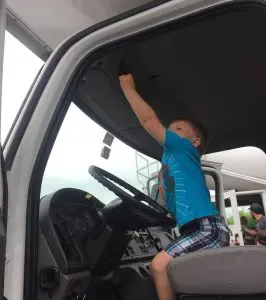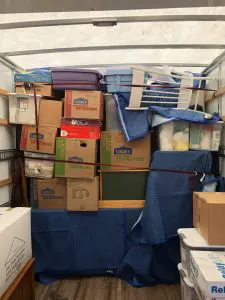A Guide to Packing for Your Move

Moving into a new home or apartment is an exciting time, but packing can quickly become overwhelming. A practical packing guide can help you tackle one room at a time, keeping everything organized and making unpacking much easier.
Declutter First
Decluttering while packing can save a significant amount of time and make you feel more refreshed by the end of the packing experience. As you go through your belongings, ask yourself: Do I use it? Do I love it? Does it fit in my new space? Donate items you no longer wish to keep, or use an online marketplace to make extra money and create space for your move.
The Basement
If you have a basement, it is likely to contain boxes of holiday decorations, old toys, and other various items. It’s also likely to have boxes that you haven’t looked at in years. If that sounds like your basement, you have your work cut out for you! You’ll want to start packing your basement early. We recommend 3-4 weeks before moving day. Start by:
- Organizing your basement by the boxes you want to keep and those you don’t. The best part is that those boxes are already packed!
- Look around the rest of your basement and gather similar items (i.e., toys, tools, and camping gear) and organize those items in boxes together. Label them clearly. Set aside those items you don’t want to move to your new house.
- Disassemble large equipment such as workout machines, shelving units, or other large items. Take pictures and keep all bolts, screws, and small parts labeled and taped to the item.
The Kitchen
The kitchen contains fragile, heavy, and sentimental items. It is often the most time-consuming room to pack. Start with non-essential items first, such as that cupcake pan or wok that is needed only for specific meals. Pack everyday utensils later and in an easy to access box or location. Here is how to get started:
- Bubble wrap, paper towels, or kitchen towels can be used to cushion glassware or ceramic plates to prevent accidents.
- Keep similar things together, like plates and silverware. This will save lots of time when unpacking. Make sure boxes are labeled.
- When packing oddly shaped items, keep in mind where something smaller could fit within a smaller space.
The Living Room
The living room contains some of the largest items, like couches, tables, and TVs. Deciding which items can be donated or sold before moving can take care of the bigger, bulky items. Most smaller items can be packed away in a box or taken apart to fit into cars or trucks.
At MVM, our crew can help with moving larger items like couches and chairs seamlessly. We also make sure each piece of furniture is properly protected to prevent damage during the move.
The Bedroom(s)
Packing a bedroom might seem straightforward—after all, it’s mostly clothes and personal items. But it can be one of the trickiest rooms to pack. From bulky furniture and fragile décor to sentimental keepsakes, a bedroom holds some of a family’s most personal belongings. To ensure belongings arrive safe and organized, consider these steps:
- Start with fragile and sentimental items and jewelry. Take special care to wrap each piece carefully and label the boxes you place them in. Determine if you want to set any items aside to personally transport.
- Pack clothing in ways that allow for easy unpacking. Consider using wardrobe boxes or bags for those items on hangers. Use suitcases, duffel bags, and boxes for clothing that is folded. Label off-season clothes for storage.
- Separate essentials to leave out for yourself and other members of the family. Don’t forget medications, phone chargers, toiletries, and bedding for the first night.
The Bathroom
Bathrooms require care when packing since many items are in glass bottles or contain cleaning solutions that could damage other items if spilled. Start with discarding expired and unused items. This will save space and make unpacking easier.
When packing toiletries and cleaning supplies, ensure that the lids and caps are tightened to avoid spills. Pack items containing liquids in boxes or other packing containers with little room between items to prevent spilling. Don’t forget to label your box “This Side Up” with an appropriate directional arrow to provide clear direction for your moving team.
The Garage
Not everyone has a garage, but if you do, it’s probably a mix of tools, sports gear, lawn equipment, and maybe even a few mystery boxes you forgot you owned. Just like the basement, the garage can take more time than you think, so plan to start packing it about 3-4 weeks before moving day.
Start by clearing out items you don’t need so you’re not hauling them to your new home. Pack lightweight items first, then move on to bulkier gear. Wrap sharp tools and secure loose parts to prevent damage or injury, and empty fuel from any gas-powered equipment to keep it safe for transport. Keep frequently used items like basic tools or cleaning supplies in an easy-to-access box for move-in day.
Let Us Help
At MVM, we work closely with you to create a move plan that aligns with your needs. If packing your house seems overwhelming or you have limited time, we can help. We can also move specialty items, like pianos, clocks, and gun safes.
Whether you are moving locally or you are making a long-distance move, we can help.
Moving Guides
Free, no obligation estimates for moving and storage
Our moving estimates are carefully customized to your unique moving needs and ensure the highest level of accuracy, and our relocation team has over 100 years of combined moving experience.




Locations in Ohio, Indiana, and Florida